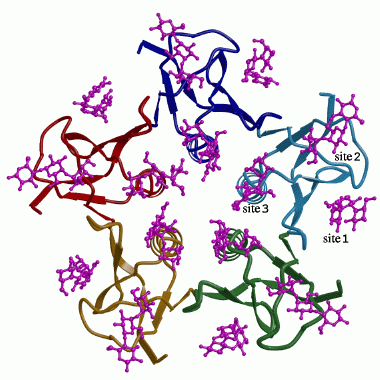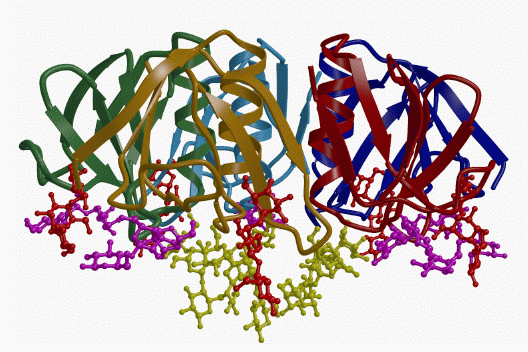

We looked at the structure of the B-subunit of a Shiga-like toxin together with the carbohydrate group from the glycolipid Gb3, which is also called the Pk-trisaccharide. On the left we see a view of the toxin B pentamer looking out from a cell membrane. On the right is an edge-on view, where the cell membrane would be on the bottom. To our great surprise, each subunit in the B pentamer binds to three Pk-trisaccharide molecules, with the 15 bound molecules nearly covering the entire binding surface of the pentamer. This finding was surprising partly by analogy with cholera toxin, where each subunit in the similar B pentamer binds to only one carbohydrate group.
 |
 |
However, the number of binding sites solved a puzzle about the action of the toxin. The toxin binds very weakly to the trisaccharide in solution (with a dissociation constant of more than 10mM), but when the trisaccharides are grouped together on the membrane of a cell, the toxin binds more than a million times as tightly. The number of carbohydrate binding sites (or valency) explains the increase in binding affinity. We can draw an analogy with Velcro, where each individual hook sticks very weakly but a whole patch of hooks can stick very strongly indeed.
To test the relative importance of the three binding sites, we designed specific mutations to eliminate binding selectively at one or two sites. All three sites play a role in toxicity, but sites 1 and 2 seem to be more important than site 3. Site 2 may be the most important single site, which is interesting considering that binding occurs only at this site in cholera toxin.
|
Back Receptors for Shiga-like toxins |
Up Back to top |
Next Connecting the receptors |